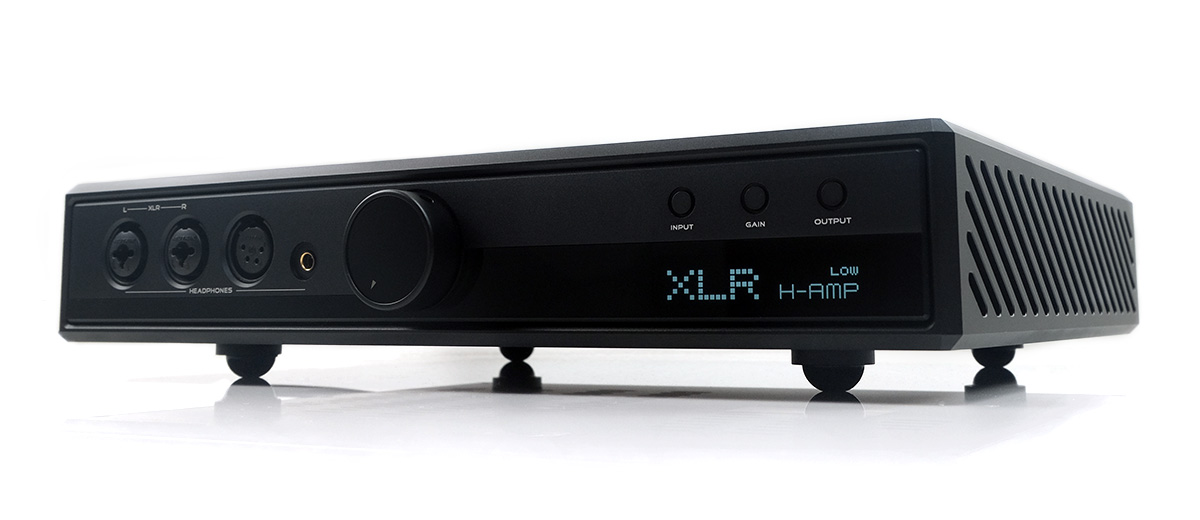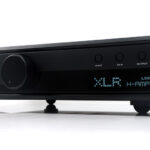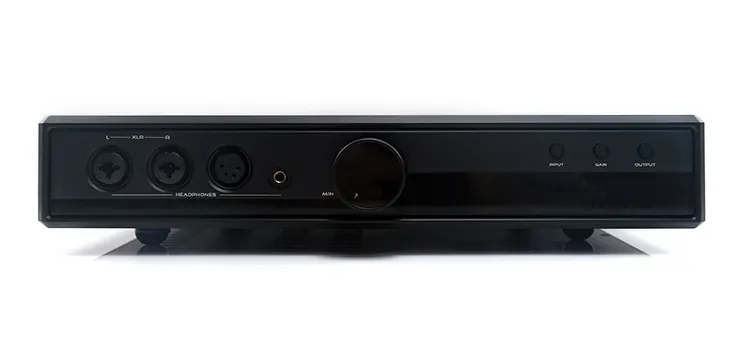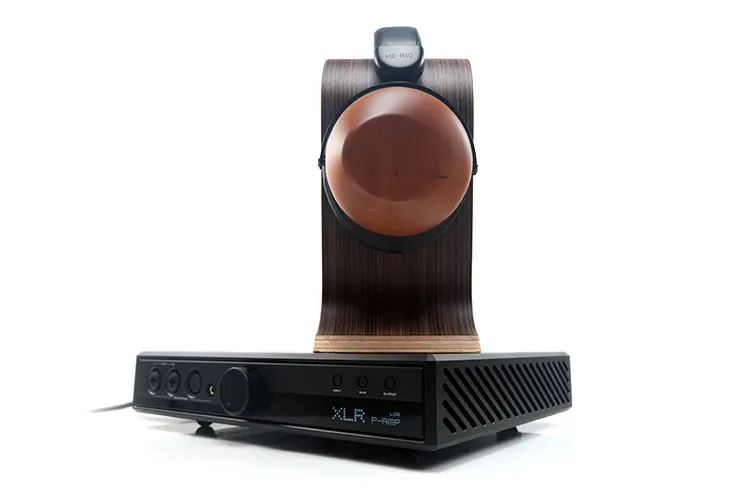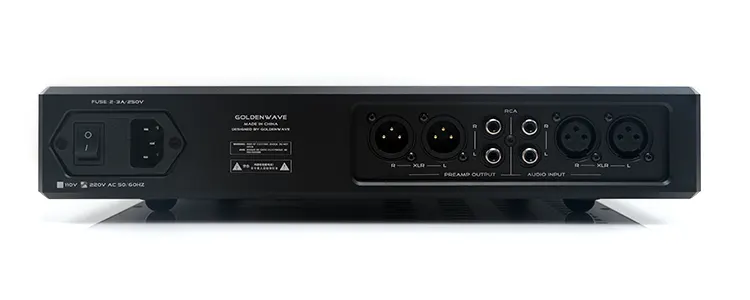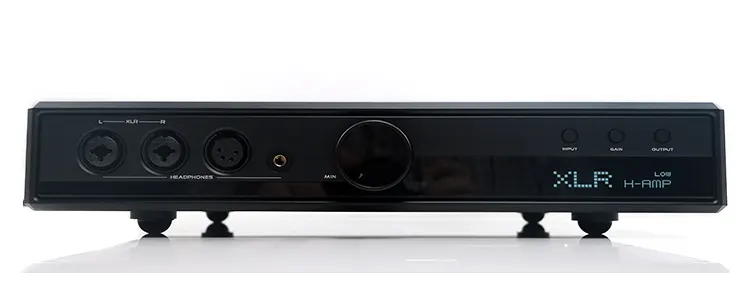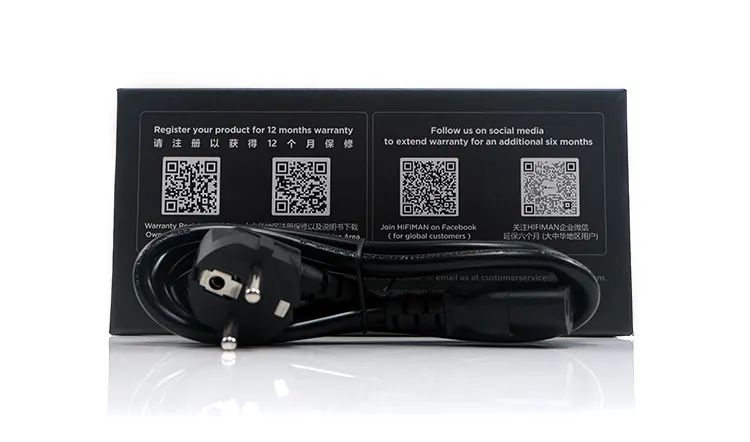We review the HIFIMAN Prelude, which is a new fully balanced Class A headphone amplifier and pre-amplifier capable of up to 10W into a 32Ω load. It is priced at $2499.
Disclaimer: This sample was sent to us in exchange for our honest opinion. Headfonics is an independent website with no affiliate links or status. We thank the team at HIFIMAN for their support.
To read more about the HIFIMAN products we have previously covered on Headfonics click here.
Note, that this post follows our current scoring guidelines which you can read in more detail here.
Earlier this year HIFIMAN did something I have not seen them do before, at least officially, and that’s buy a reputable audio boutique company and absorb it into their collective range of product offerings. That company is or was Goldenwave.
For those who are not aware, the Prelude was originally doing the rounds under the Goldenwave branding and is now being marketed as the HIFIMAN Prelude. Though by no means diminishing the credit to Goldenwave for the unit’s origins, you will now see all of Goldenwave’s latest offerings under the HIFIMAN branding.
The original Prelude can still be acquired on the likes of AliExpress but it’s a very different beast with its integrated delta-sigma DAC and balanced headphone/pre-amp all-in-one design.
The HIFIMAN Prelude strips out the AKM DAC and world clock sync functionality and now becomes a pure fully balanced dedicated analog headphone and pre-amplifier design with a price tag of $2499.
If you want a DAC to go with it then the new HIFIMAN Serenade, with its R-2R Himalaya Pro DAC, is the most likely companion for the Prelude.
Tech Highlights
Amplification
The HIFIMAN Prelude is a fully balanced analog headphone amplifier with an independent balanced pre-amplification circuit. It can act either as a dedicated desktop headphone amplifier or as a pre-amplifier to your power amp for larger HiFi speaker setups.
Both the headphone and pre-amp circuits are discrete-designed Class A MOSFET with a single-ended balanced conversion for SE inputs to be converted to a balanced signal output.
You will note that the amplifier has no provision for a single unbalanced jack output, (PO), for headphones but it will accept SE inputs for both headphone and pre-amp circuits, hence the conversion circuit.
All of this is powered by a heavy-weight customized toroidal transformer inside the main chassis which is a contributing factor in the fairly substantial weight of the Prelude at 6.5 kg.
Performance Numbers
The Prelude has some serious power for the headphone side with a maximum of 10W into a 32Ω dropping down to a very generous 1W into 300Ω and 560mW at 600Ω. The output impedance for headphones is sub-1Ω.
Given the Susvara is a 60Ω load you can expect to get just over 6W from the Prelude making it a potentially ideal pairing. Even higher impedance headphones such as the 300Ω ZMF Headphones Atrium have plenty of headroom given their drivers are rated at less than 300mW.
Those numbers also come quite close to 2021’s media darling, the Ferrum OOR which has a slightly higher ceiling of 8W into 60Ω and 1.6W into 300Ω.
The Prelude’s pre-amplification balanced XLR output is also industry competitive at 4Vrms per channel on its balanced output giving it some good capability for linking up with power amplifiers for speakers.
Design
The HIFIMAN Prelude has a fairly wide and low-profile form factor quite unlike anything HIFIMAN has launched under its brand to date.
If you dig through the Goldenwave product line-up you will see their design language is dominant here but no complaints here as the aesthetic is modern, slick, and very attractively finished with that very legible LED panel to the far right and easy access functional buttons just above.
I especially like the generous amounts of venting on the sides and base of the Prelude. Not only does give it a slightly aggressive and unique aesthetic but it also serves a very important function letting that Class A amplifier breathe and it does get warm during use.
Slip your hand to the side and you will feel that hot air vent so I would advise not putting anything heat sensitive close to the sides.
You will notice the weight as the Prelude is deceptively heavy for its size at 6.5 Kg. Much of that has to do with the fairly thick anodized aluminum chassis combined with the hefty toroidal transformer on the inside.
Despite being a sturdy unit, I would still say handle it with care because the black anodized finish might take a scratch or two if you do not have two hands firmly handling it when moving it around.
One final note is the base with its four curved rubbery feet. they grip very nicely but just be careful they are secured on the base properly when unboxing as they are stuck on rubber feet rather than integrated into the base of the unit.
I/O
The Prelude has two sets of analog inputs and outputs on its rear panel. The inputs are primarily to receive an incoming converted signal from a DAC with options for both RCA single-ended and balanced 3-pin XLR.
Note, that the SE input will be converted to a balanced signal on output to any headphone connected on the front panel.
You get a similar setup but in reverse for pre-amplification with dual XLR output for a balanced output and a dual RCA single-ended output, (converted from balanced internally).
Just to note the Prelude’s AC, (power), is fixed for whatever specific region it is being sold in. For example, 110V for North America and 240V for the UK, and parts of Asia. Just be sure you have the right version or connected to a step-down transformer before you plug it in.
On the front, you have 3 PO options to the far left which include a traditional balanced 4-pin XLR single-socket and a more modern 4.4mm Pentaconn equivalent.
Besides these two you have what are called dual-purpose sockets that accept either a 6.35mm SE or a balanced 3-pin XLR cable termination.
Controls
Aside from a rear power-on switch, all the Prelude controls are housed on the front panel. I have to say that the layout is excellent for headphone users but perhaps not so couch-friendly for those wishing to use it for pre-amping since it does not have any remote control capability.
However, whether you are near or far the LED display is big and bold and very legible at most reasonable angles making it a joy to read from these tired eyes of mine.
Just above you have a tidy row of three physical buttons that control the input, gain level, and output modes. You have two choices for each button; RCA or XLR inputs, high or low gain, and headphone amplifier or pre-amp out.
All options are clear and easy to read on the LED display though note the output indicator is abbreviated ‘H-AMP’ and ‘P-AMP’. The gain option of low is set to 0.7Vrms with high gain offering 1Vrms.
Potentiometer
Volume control is also in the analog domain with the Prelude using an Alps RK27 “Blue Velvet”. These are classic or well-known high-end potentiometers with excellent wiper contact and usually a very long useable life span.
The Blue Velvet pots also normally come with inter-channel matching within +/- 2dB so despite being in the analog domain, the Prelude should sound quite balanced for channel matching with sensitive gear on low volume.
Packaging & Accessories
HIFIMAN now uses a very harmonized minimalist brown cardboard packaging system for a lot of their headphones and most of their amplifiers so there is a high degree of familiarity with their packaging save for the variable sizing of the box.
And since the unit is heavy, so is the overall packaging despite its mid-sized proportions. Thankfully, both the courier box and packaging box are sturdy with copious amounts of black foam protecting the amplifier and the small accessories box on the inside.
You do not get much though with the Prelude. Just the appropriately terminated power plug and a bit of warranty information. If you want a proper manual in English you will need to download one from the main HIFIMAN website support section.
The supplied accessory box does have several QR codes which you can scan for your basic 12-month warranty as well as an additional six months if you follow HIFIMAN on social media giving you 18 months in total which is pretty decent.
Click on page 2 below for sound impressions and our recommended pairings.

